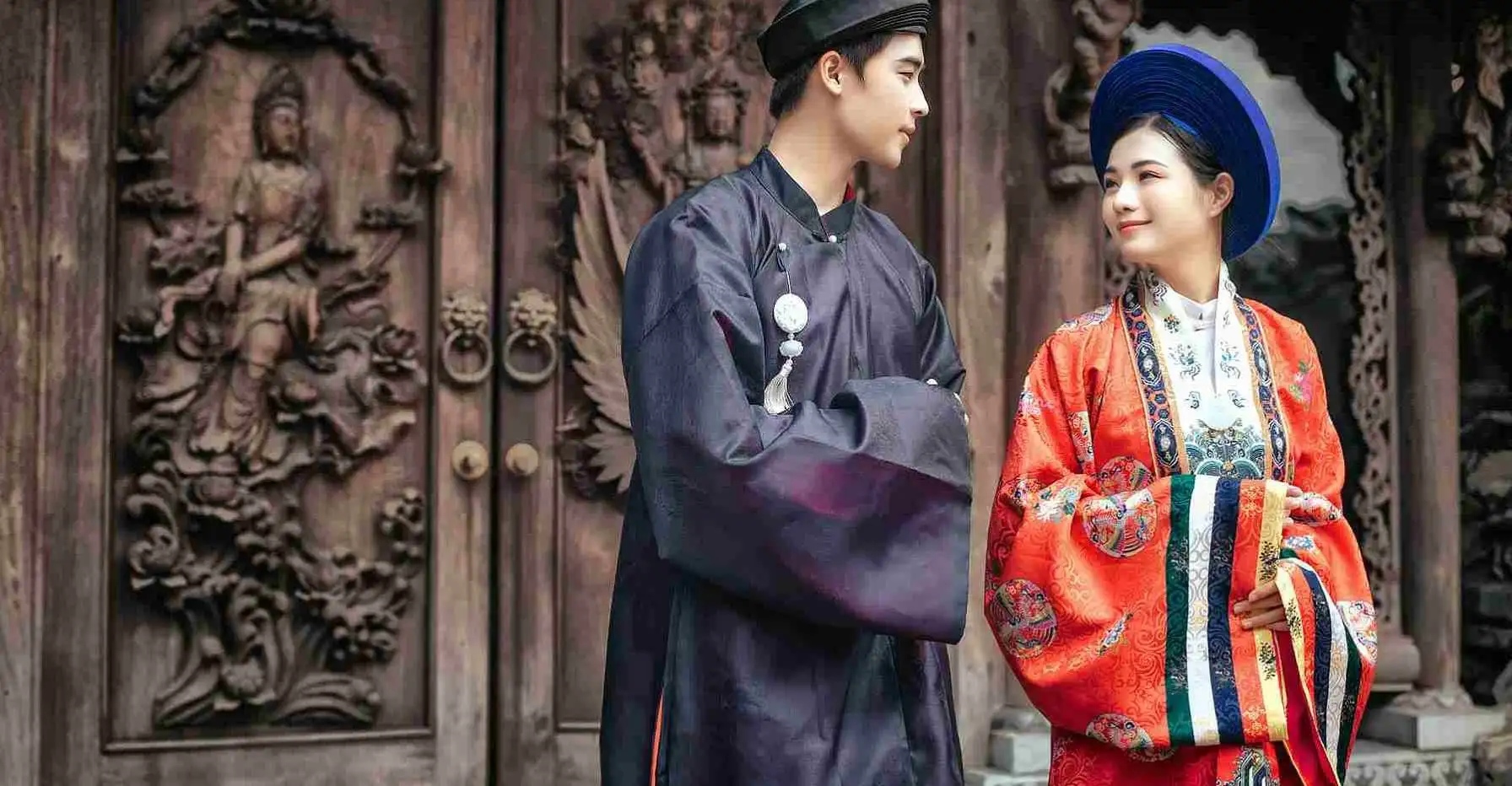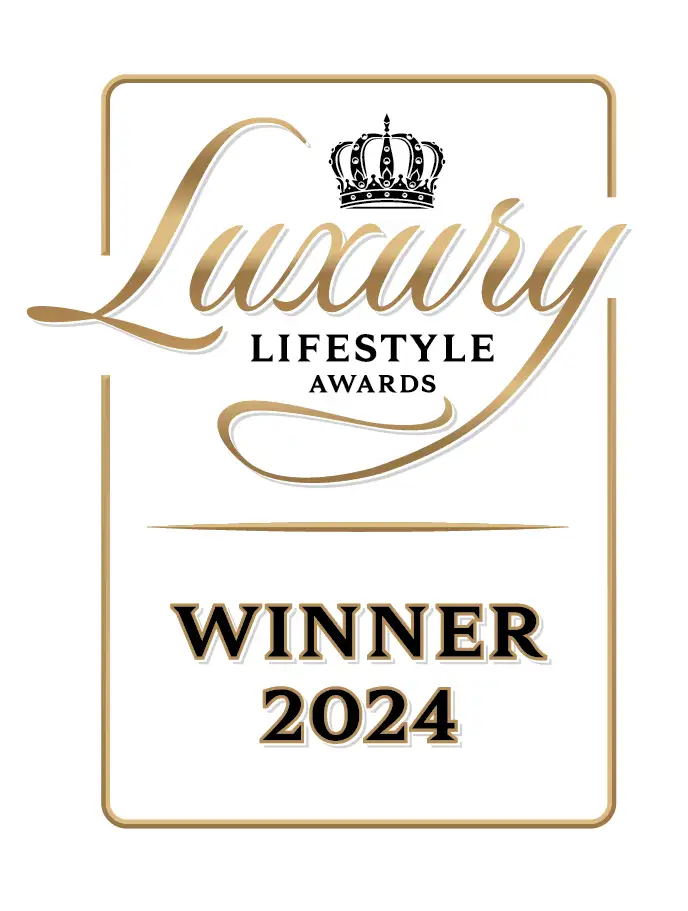The elegance of traditional Vietnamese wedding clothes: A complete guide
A Vietnamese wedding is more than just a ceremony, it’s a beautiful blend of tradition, culture, and symbolism, where every detail carries deep meaning. Among these, the traditional Vietnamese wedding clothes stand out as a reflection of heritage and elegance. What makes these outfits so special? Let’s explore their history, significance, and how they continue to evolve in modern times.
Introduction to traditional Vietnamese wedding clothes
A Vietnamese wedding is a vibrant celebration deeply rooted in culture, family, and tradition. Among the many symbolic elements, wedding attire holds great significance, representing elegance, respect, and heritage.
Traditional Vietnamese wedding clothes have evolved over centuries, influenced by different dynasties and cultural exchanges. The iconic ao dai, often worn by brides, embodies grace and femininity, while grooms typically wear áo gấm, featuring intricate patterns symbolizing prosperity. Each garment is thoughtfully designed, with colors and details chosen to convey blessings of happiness and good fortune.
History and evolution of Vietnamese wedding attire
Vietnamese wedding attire has undergone significant transformations over the centuries, influenced by historical changes, royal customs, and cultural exchanges. From the elaborate clothing of the feudal dynasties to the more modern adaptations seen today, each era has left its mark on the traditional wedding dress.
Changes in traditional Vietnamese wedding attire through different historical periods
Vietnamese wedding clothing has evolved significantly over time, reflecting the social, cultural, and political shifts of each era. While the essence of formality and elegance has remained, the styles, materials, and symbolic details have transformed to align with changing traditions and influences.
Feudal Dynasties (Ly, Tran, Le, Nguyen – 11th to 19th Century)
During the feudal era, traditional Vietnamese wedding attire evolved through different dynasties while maintaining its distinctive cultural essence. The design, colors, and materials of wedding garments not only reflected aesthetics but also symbolized social status, marriage ideals, and the influence of Confucian values.
In the Ly and Tran dynasties, wedding attire showcased strong Vietnamese cultural identity. Brides typically wore ao giao linh, a cross-collared robe paired with a long skirt, while grooms wore a simple ao dai with a khăn đóng (a traditional headdress). Intricate embroidery and accessories such as headscarves or decorative hats enhanced the elegance of the wedding outfit.
During the Le dynasty, clothing styles varied significantly based on social class. Noblewomen often wore ao tu than (a four-panel gown) along with a yem (traditional bodice) and a long skirt, while commoners dressed in simpler versions. The most popular colors for wedding attire were deep blue and green, symbolizing elegance and sophistication.
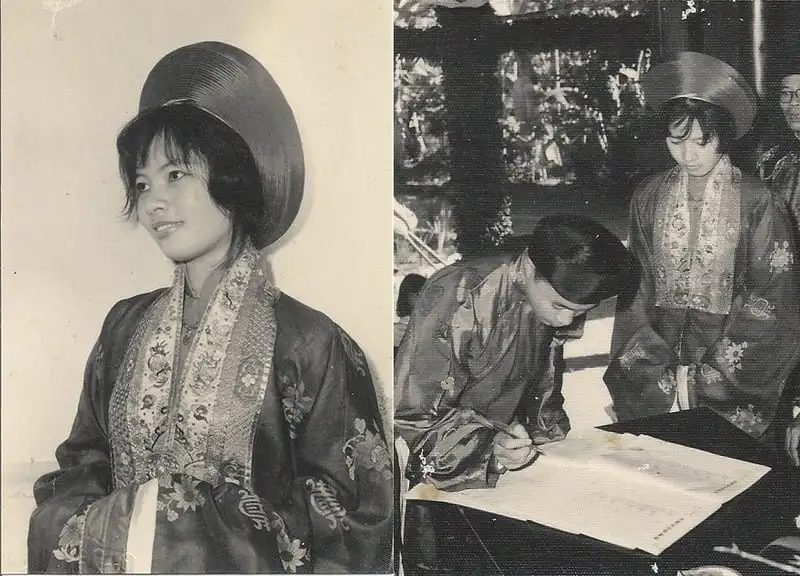
By the Nguyen dynasty, wedding attire became more refined with the introduction of the áo ngũ thân, the predecessor of the modern ao dai. This five-panel tunic featured a high collar and was crafted from luxurious fabrics such as brocade and silk, reflecting social status and wealth. Wedding dress colors also diversified, with red and pink becoming popular choices, symbolizing happiness and good fortune.
Overall, traditional Vietnamese wedding attire during the feudal era was not just about beauty, it also conveyed social hierarchy and cultural values, deeply rooted in the customs of each historical period.
French Colonial Period (Late 19th – Mid-20th Century)
The French presence in Vietnam introduced new fashion influences, leading to significant changes in traditional wedding attire. The ao dai, originally a loose-fitting garment, was transformed with European-inspired details. In 1930, artist Cat Tuong introduced the Le Mur ao dai, featuring puffed shoulders, lapel collars, and voluminous sleeves, reflecting a strong Western influence. However, by 1934, artist Le Pho refined the design, removing excessive European elements to create a more form-fitting silhouette with flowing panels, striking a balance between tradition and modernity.
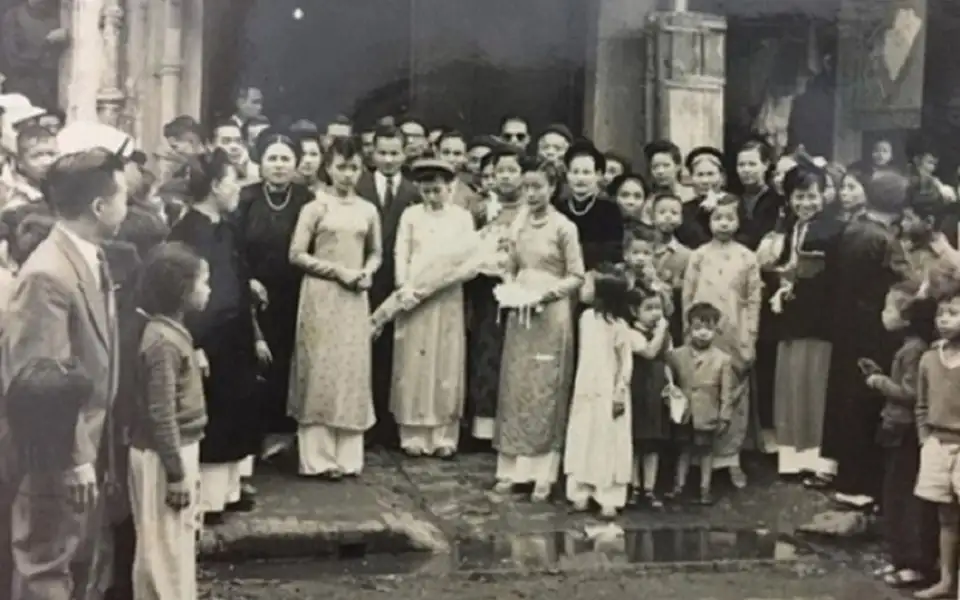
Post-War era and socialist influence (Mid-20th Century – 1980s)
After the war, economic hardship led to a more simplified approach to wedding attire. Brides commonly wore plain white or pastel ao dai, paired with white trousers and simple high-heeled shoes. Grooms typically dressed in Western-style suits with dress shoes and a necktie. During this period, handheld bridal bouquets also became a more common wedding accessory, adding a delicate touch to ceremonies.

Although luxury fabrics and intricate embroidery were scarce, ao dai remained a symbol of Vietnamese tradition. Simplicity became the defining characteristic of wedding fashion during these years, reflecting both necessity and changing social values.
Modern era (1990s – present)
Since the 1990s, Vietnam’s economic growth and cultural exchanges have revitalized traditional wedding attire. Today, couples have a wide range of choices, from classic ao dai to Western-style wedding dresses and suits. Modern wedding ao dai are crafted from high-quality fabrics, adorned with intricate embroidery, and available in a variety of colors beyond the traditional red and gold.
This era represents a harmonious blend of tradition and modernity, allowing couples to honor their heritage while embracing contemporary fashion trends.
Read more: Central Vietnam places to visit: 12 breathtaking destinations you can’t miss
Ao dai – the iconic Vietnamese wedding dress
The ao dai is more than just a wedding dress, it is a cultural symbol deeply embedded in Vietnamese heritage. With its graceful silhouette, flowing panels, and intricate embroidery, the ao dai embodies both tradition and elegance. For centuries, Vietnamese brides have worn this iconic outfit to honor their roots while celebrating love and new beginnings. Over time, the ao dai has evolved, influenced by historical changes and modern fashion trends, yet it remains a timeless expression of beauty and tradition.
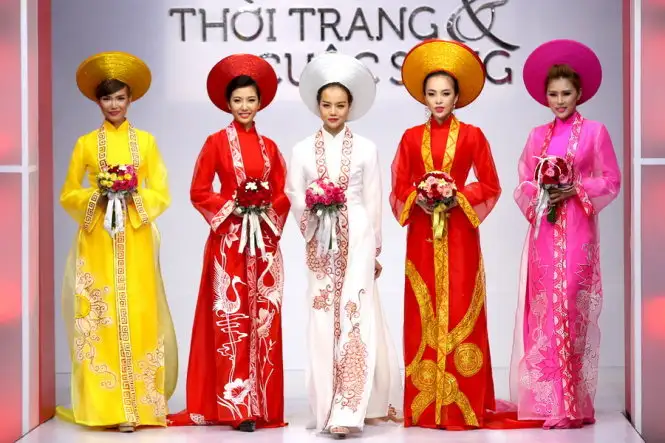
One of the most distinctive features of a wedding ao dai is the luxurious fabric used to create it. Traditionally, high-quality materials such as silk, brocade, and velvet were chosen to represent refinement and sophistication. In contemporary designs, lighter fabrics like lace, chiffon, and organza have been introduced, adding a delicate and romantic touch. Embroidery is also a defining element, often featuring symbols like dragons, phoenixes, lotus flowers, and peonies, each carrying meanings of prosperity, happiness, and marital harmony. Many ao dai are further enhanced with pearls, sequins, or gold thread, making them even more exquisite.
Beyond its design, the color of the ao dai holds deep cultural significance. Red remains the most popular choice for brides, as it represents luck, happiness, and prosperity, bringing blessings to the couple. White, symbolizing purity and new beginnings, has gained popularity among modern brides who seek a Western-inspired aesthetic. Gold, often worn by both the bride and groom, signifies wealth and nobility, making it an ideal choice for grand weddings. Meanwhile, softer shades like pink, peach, and pastel blue have become trendy, reflecting romance and femininity.
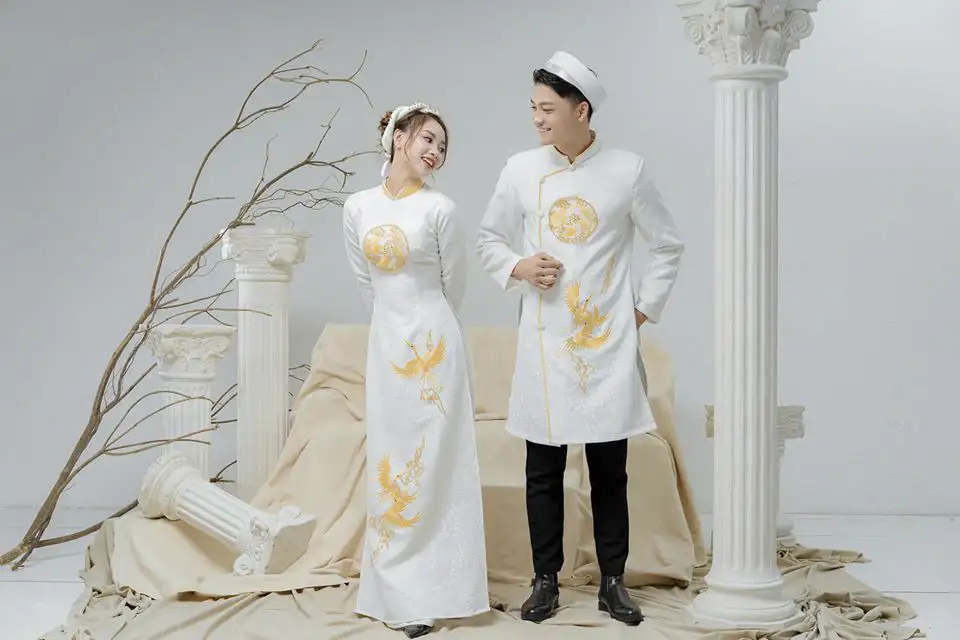
Over the years, the ao dai has transformed to suit contemporary tastes while preserving its traditional essence. The classic ao dai features a high collar, long sleeves, and a loose-fitting silhouette, often paired with a khan van (a traditional headdress) to create a regal and elegant look. In contrast, modern designs embrace a more fitted silhouette, with lower necklines, sheer fabrics, and intricate lace overlays. Some brides opt for high slits, open-back designs, or tailored cuts, blending traditional grace with contemporary sophistication.
Despite these variations, the ao dai remains a timeless symbol of Vietnamese bridal beauty. Whether in its traditional or modern form, it continues to be an essential part of Vietnamese weddings, reflecting both cultural pride and personal expression. The ao dai’s ability to evolve while maintaining its deep-rooted symbolism ensures that it will always hold a special place in Vietnamese wedding traditions.
Groom’s traditional wedding attire
Just like the bride, the groom in a traditional Vietnamese wedding often wears an ao dai, a long tunic with side slits, worn over loose pants. However, the groom’s ao dai tends to have a simpler yet more regal design. The most common material is brocade (gam), known for its thick, durable texture and elegant, embossed patterns.

Popular colors for the groom’s traditional Vietnamese wedding attire include gold, red, royal blue, and white, each carrying symbolic meanings of prosperity, happiness, and purity. Some designs also feature embroidered dragons or stylized patterns, representing power and good fortune in marriage.
Apart from the ao dai, many grooms opt for the ao gam, a brocade tunic that is slightly thicker and features intricate woven patterns. This outfit exudes elegance and tradition, often paired with white or dark silk pants for a well-balanced and harmonious look. The traditional Vietnamese men’s wedding attire maintains a sense of nobility while complementing the bride’s wedding dress.
Read more: Discover the magical beauty beneath the sea with diving Hoi An
Accessories for Traditional Vietnamese wedding clothes
Accessories are an essential part of traditional Vietnamese wedding attire, adding elegance and cultural significance to both the bride and groom’s outfits. These carefully chosen elements complete the overall look, reflecting Vietnamese heritage and symbolism.
Khan Dong
Khan dong is often worn by both the bride and groom (source: linh bui)
The khan dong is a stiff, circular headdress made of fabric, often worn by both the bride and groom. It is wrapped in multiple layers to create a structured, elegant shape. The bride’s khan dong is typically decorated with intricate embroidery, beads, or gold accents, complementing her traditional Vietnamese wedding outfit. The groom’s khan dong is simpler but still adds a dignified, formal touch to his attire.
Jewelry

Jewelry plays a significant role in Vietnamese weddings, representing prosperity and good fortune. Brides often wear gold necklaces, bracelets, and earrings, sometimes gifted by their families during the wedding ceremony. Grooms may also receive a gold necklace or wedding ring, symbolizing love and commitment. In some cases, family heirlooms are passed down to the couple, adding sentimental value to their traditional Vietnamese wedding clothes.
Footwear
Traditional footwear varies depending on the outfit and personal preference. Brides typically wear silk or embroidered shoes that match their ao dai, ensuring elegance and comfort. Grooms usually opt for black or brown leather shoes, adding a modern, polished touch to their traditional Vietnamese men’s wedding attire.
Hand fan
In some traditional weddings, brides carry a hand fan, often made of silk or lacquered wood, as a symbol of grace and refinement. The fan can also serve as a beautiful prop for wedding photography, enhancing the timeless charm of Vietnam traditional clothing.
Tips when choosing traditional Vietnamese wedding clothes
Selecting the perfect traditional Vietnamese wedding attire is essential to ensure both beauty and cultural significance on your special day. Here are some useful tips to help brides and grooms choose the best traditional Vietnamese wedding outfit.

- Choose the right fabric for comfort and elegance
Opt for high-quality fabrics such as silk, brocade, or velvet for a luxurious and elegant look. Lightweight materials like chiffon or soft silk are ideal for warm weather, while thicker brocade adds a regal touch to Vietnam traditional clothing.
- Pick meaningful colors
Color plays a significant role in Vietnamese wedding traditions. Red and gold symbolize luck, happiness, and prosperity, making them the most popular choices. Brides who prefer a softer look can opt for pastel shades, while grooms can choose classic colors like royal blue, white, or gold for a sophisticated traditional Vietnamese men’s wedding attire.
- Ensure a perfect fit
Whether wearing an ao dai or ao gam, a well-fitted outfit enhances elegance and comfort. Custom tailoring ensures the traditional Vietnamese wedding clothes drape beautifully, allowing for ease of movement throughout the ceremony.
- Match accessories thoughtfully
Complete the look with appropriate accessories. Brides can wear khan dong (headdress), gold jewelry, and embroidered shoes, while grooms should select khan dong, leather shoes, and a matching belt for a polished look. These small details elevate the overall appearance of traditional Vietnamese wedding attire.
If you’re looking for a stunning venue to complement your traditional attire, Bliss Hoi An Beach Resort & Wellness offers a perfect backdrop for your wedding day. With its picturesque beachfront setting and exceptional service, Bliss Hoi An provides an unforgettable experience, allowing you to celebrate your special day in style while embracing Vietnamese wedding traditions.
We hope this article from Bliss Hoi An Beach Resort & Wellness has provided you with valuable insights into traditional Vietnamese wedding clothes. Whether you are planning your wedding or simply exploring the beauty of Vietnam traditional clothing, understanding the significance behind each element helps preserve and honor this cultural heritage.

